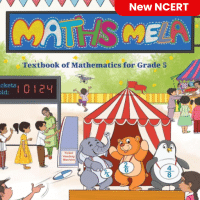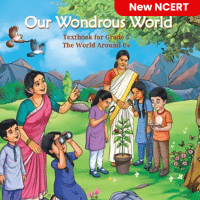Class 5 Exam > Class 5 Questions > What natural phenomenon does the poet compare...
Start Learning for Free
What natural phenomenon does the poet compare to man-made bridges in the poem?
- a)Rainbows
- b)Ships
- c)Clouds
- d)Mountains
Correct answer is option 'A'. Can you explain this answer?
Most Upvoted Answer
What natural phenomenon does the poet compare to man-made bridges in t...
The poet compares rainbows to man-made bridges, suggesting that the colorful arc of a rainbow, which connects the earth to the sky, is more beautiful than any bridge created by humans. This highlights the theme of appreciating nature's beauty over artificial constructs. Interestingly, rainbows are formed by the refraction, dispersion, and reflection of light, resulting in a spectrum of colors that can evoke a sense of wonder.
Free Test
FREE
| Start Free Test |
Community Answer
What natural phenomenon does the poet compare to man-made bridges in t...
Comparison of Natural Phenomena to Man-Made Bridges
In the poem, the poet draws a vivid comparison between natural phenomena and human creations, specifically highlighting the beauty and symbolism of rainbows in relation to man-made bridges.
Significance of Rainbows
- Nature's Bridge: Rainbows are often seen as nature's own bridge, appearing in the sky after a rainstorm. They connect the earth and the heavens, similar to how bridges connect two land masses.
- Colors and Beauty: Just like bridges are designed to be functional and aesthetically pleasing, rainbows exhibit a stunning array of colors. This can symbolize hope and joy, much like the emotions associated with crossing a bridge.
Symbolism in the Poem
- Connection: Both rainbows and bridges symbolize connection. Bridges connect people and places, while rainbows connect different elements of nature, such as rain and sunshine.
- Transience and Wonder: Rainbows are temporary and fleeting, evoking a sense of wonder. This can be compared to the way a bridge can represent a moment of transition in one's journey.
Conclusion
By comparing rainbows to man-made bridges, the poet emphasizes the beauty of natural phenomena and their ability to evoke feelings of connection and hope. This comparison enriches the poem, inviting readers to reflect on the wonders of both nature and human ingenuity.
In the poem, the poet draws a vivid comparison between natural phenomena and human creations, specifically highlighting the beauty and symbolism of rainbows in relation to man-made bridges.
Significance of Rainbows
- Nature's Bridge: Rainbows are often seen as nature's own bridge, appearing in the sky after a rainstorm. They connect the earth and the heavens, similar to how bridges connect two land masses.
- Colors and Beauty: Just like bridges are designed to be functional and aesthetically pleasing, rainbows exhibit a stunning array of colors. This can symbolize hope and joy, much like the emotions associated with crossing a bridge.
Symbolism in the Poem
- Connection: Both rainbows and bridges symbolize connection. Bridges connect people and places, while rainbows connect different elements of nature, such as rain and sunshine.
- Transience and Wonder: Rainbows are temporary and fleeting, evoking a sense of wonder. This can be compared to the way a bridge can represent a moment of transition in one's journey.
Conclusion
By comparing rainbows to man-made bridges, the poet emphasizes the beauty of natural phenomena and their ability to evoke feelings of connection and hope. This comparison enriches the poem, inviting readers to reflect on the wonders of both nature and human ingenuity.

|
Explore Courses for Class 5 exam
|

|
Question Description
What natural phenomenon does the poet compare to man-made bridges in the poem?a)Rainbowsb)Shipsc)Cloudsd)MountainsCorrect answer is option 'A'. Can you explain this answer? for Class 5 2025 is part of Class 5 preparation. The Question and answers have been prepared according to the Class 5 exam syllabus. Information about What natural phenomenon does the poet compare to man-made bridges in the poem?a)Rainbowsb)Shipsc)Cloudsd)MountainsCorrect answer is option 'A'. Can you explain this answer? covers all topics & solutions for Class 5 2025 Exam. Find important definitions, questions, meanings, examples, exercises and tests below for What natural phenomenon does the poet compare to man-made bridges in the poem?a)Rainbowsb)Shipsc)Cloudsd)MountainsCorrect answer is option 'A'. Can you explain this answer?.
What natural phenomenon does the poet compare to man-made bridges in the poem?a)Rainbowsb)Shipsc)Cloudsd)MountainsCorrect answer is option 'A'. Can you explain this answer? for Class 5 2025 is part of Class 5 preparation. The Question and answers have been prepared according to the Class 5 exam syllabus. Information about What natural phenomenon does the poet compare to man-made bridges in the poem?a)Rainbowsb)Shipsc)Cloudsd)MountainsCorrect answer is option 'A'. Can you explain this answer? covers all topics & solutions for Class 5 2025 Exam. Find important definitions, questions, meanings, examples, exercises and tests below for What natural phenomenon does the poet compare to man-made bridges in the poem?a)Rainbowsb)Shipsc)Cloudsd)MountainsCorrect answer is option 'A'. Can you explain this answer?.
Solutions for What natural phenomenon does the poet compare to man-made bridges in the poem?a)Rainbowsb)Shipsc)Cloudsd)MountainsCorrect answer is option 'A'. Can you explain this answer? in English & in Hindi are available as part of our courses for Class 5.
Download more important topics, notes, lectures and mock test series for Class 5 Exam by signing up for free.
Here you can find the meaning of What natural phenomenon does the poet compare to man-made bridges in the poem?a)Rainbowsb)Shipsc)Cloudsd)MountainsCorrect answer is option 'A'. Can you explain this answer? defined & explained in the simplest way possible. Besides giving the explanation of
What natural phenomenon does the poet compare to man-made bridges in the poem?a)Rainbowsb)Shipsc)Cloudsd)MountainsCorrect answer is option 'A'. Can you explain this answer?, a detailed solution for What natural phenomenon does the poet compare to man-made bridges in the poem?a)Rainbowsb)Shipsc)Cloudsd)MountainsCorrect answer is option 'A'. Can you explain this answer? has been provided alongside types of What natural phenomenon does the poet compare to man-made bridges in the poem?a)Rainbowsb)Shipsc)Cloudsd)MountainsCorrect answer is option 'A'. Can you explain this answer? theory, EduRev gives you an
ample number of questions to practice What natural phenomenon does the poet compare to man-made bridges in the poem?a)Rainbowsb)Shipsc)Cloudsd)MountainsCorrect answer is option 'A'. Can you explain this answer? tests, examples and also practice Class 5 tests.

|
Explore Courses for Class 5 exam
|

|
Signup for Free!
Signup to see your scores go up within 7 days! Learn & Practice with 1000+ FREE Notes, Videos & Tests.


















